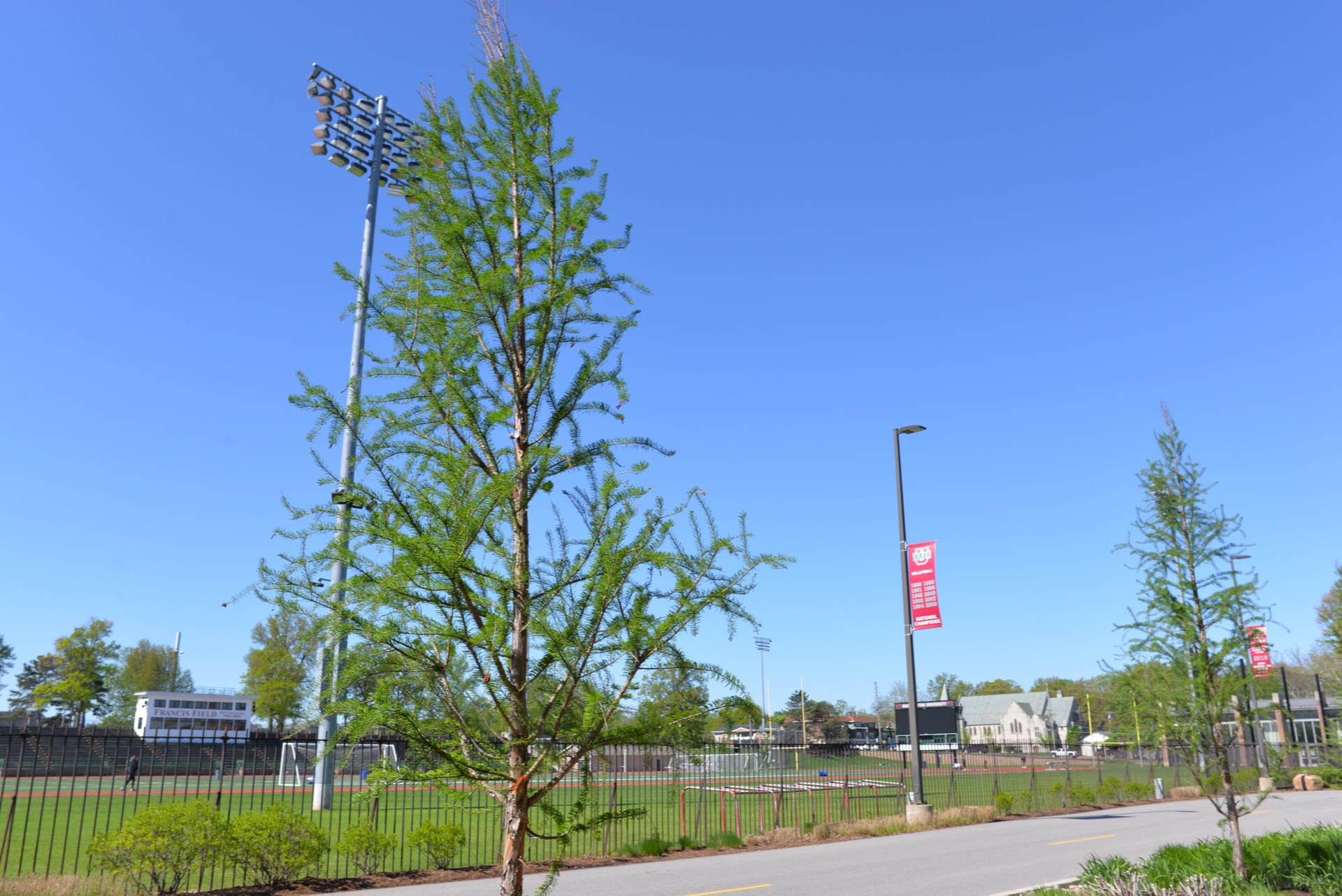Bald Cypress
Arbor Walk #37, Treekeeper ID #2507

The Bald Cypress is the state tree of Louisiana. Despite its resemblance to a needled evergreen tree in the summer, it is actually deciduous. Although it’s a familiar sight around swampy areas in the Deep South, the tree is tolerant of a wide range of soil conditions and does well even in drier, upland soils. It can be natively found in low-lying wetland areas throughout the lower Mississippi River Valley – including as far north as the southeastern corner of Missouri. In submerged or wet soils, Bald Cypresses will grow “knees” called pneumatophores — specialized roots that allow waterlogged roots below to receive air.
The ‘Mickelson’ is a cultivar of the Bald Cypress, and has a narrower shape and denser foliage than the native species.
More information on the Bald Cypresses in our Arboretum here!
| Common Names | Bald Cypress, Swamp Cypress, White Cypress, Red Cypress, Gulf Cypress |
|---|---|
| Latin Name | Taxodium distichum |
| Indigenous Name(s) | |
| Cultivar/Variety | ‘Mickelson’ |
| Commercial Name | SHAWNEE BRAVE |